What About the Afghanistan Flag Emoji?

With the uncertain and ongoing situation in Afghanistan right now, one question that arises with consistency at times like this relates to the flag. If the flag of Afghanistan changes: what happens to the emoji?
The short version is this:
- Emoji flags are a placeholder for the current flag of any given country.
- If a country flag changes, so does the emoji of that flag (over time).
- Users cannot choose between an old and new country flag. One per country.
- This does create complications for archived messages. What once showed the Black, Red and Green flag of the Islamic Republic of Afghanistan may in future show the flag of the Taliban to represent the Islamic Emirate of Afghanistan.
- The choice of how and when to update any emoji flag design rests with platform owners like Google or Apple. If or when emoji updates are implemented is their choice. This could be done in consultation between vendors, or decided individually.
- The related question is whether the international community recognizes a Taliban flag as valid. It's likely major companies would only move to change the appearance of this flag if there is already global consensus. Too much is at stake to simply change without due consideration.
- This isn't just a question of technical implementation, but also how any such change would feel to Afghan users. It's not a trivial question, nor are there easy answers.
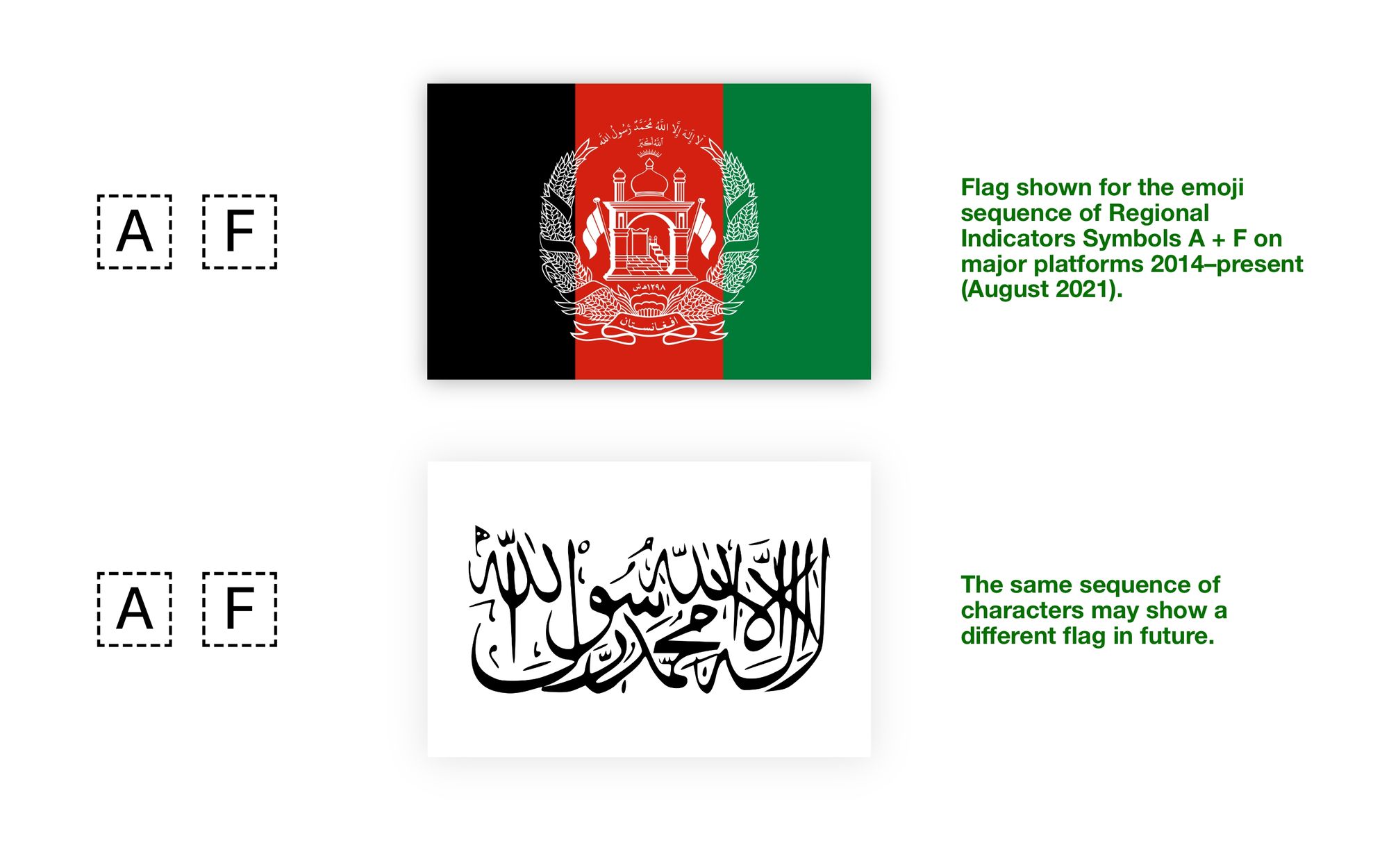
🎌 Emoji Flags
While all flags on the emoji keyboard look equal, that's not the case. Some flags are more equal than others both from a technical perspective, and how they are decided.
For the purposes of this article, the focus is on country flags which are known in Unicode parlance as Emoji Flag Sequences. These are created by combining two Regional Indicator Symbols to represent a country.
The idea being: over time there could be any number of countries in the world. Rather than encode a new emoji for each, by using codes such as "US" for the United States or "AF" for Afghanistan, it's then over to companies like Apple or Google to decide how these should display on their respective operating systems iOS or Android.
Read more about the different types of emoji flags, and what sets them apart.
🇦🇫 Afghanistan Flag
Here's the emoji in question right now:
When written today (16th of August 2021), this emoji appears on all major platforms as the flag of the Islamic Republic of Afghanistan. That is: a vertical tricolor of (L-R) black, red, and green, with the National Emblem of Afghanistan in the middle.
Given that the design of this emoji 🇦🇫 may change in future, we recommend caution if using this to display a specific version of the flag of Afghanistan https://t.co/ct1HkZLfBL
— Emojipedia (@Emojipedia) August 16, 2021
From when I started writing this article to when I finished it, the Wikipedia article Flag of Afghanistan has been updated to show the defacto flag as the “Shahadah on a white flag”, aka the Taliban flag.
If the international community recognize this as the flag as legitimate moving forward, it's likely to come to phones in software updates over the coming years.
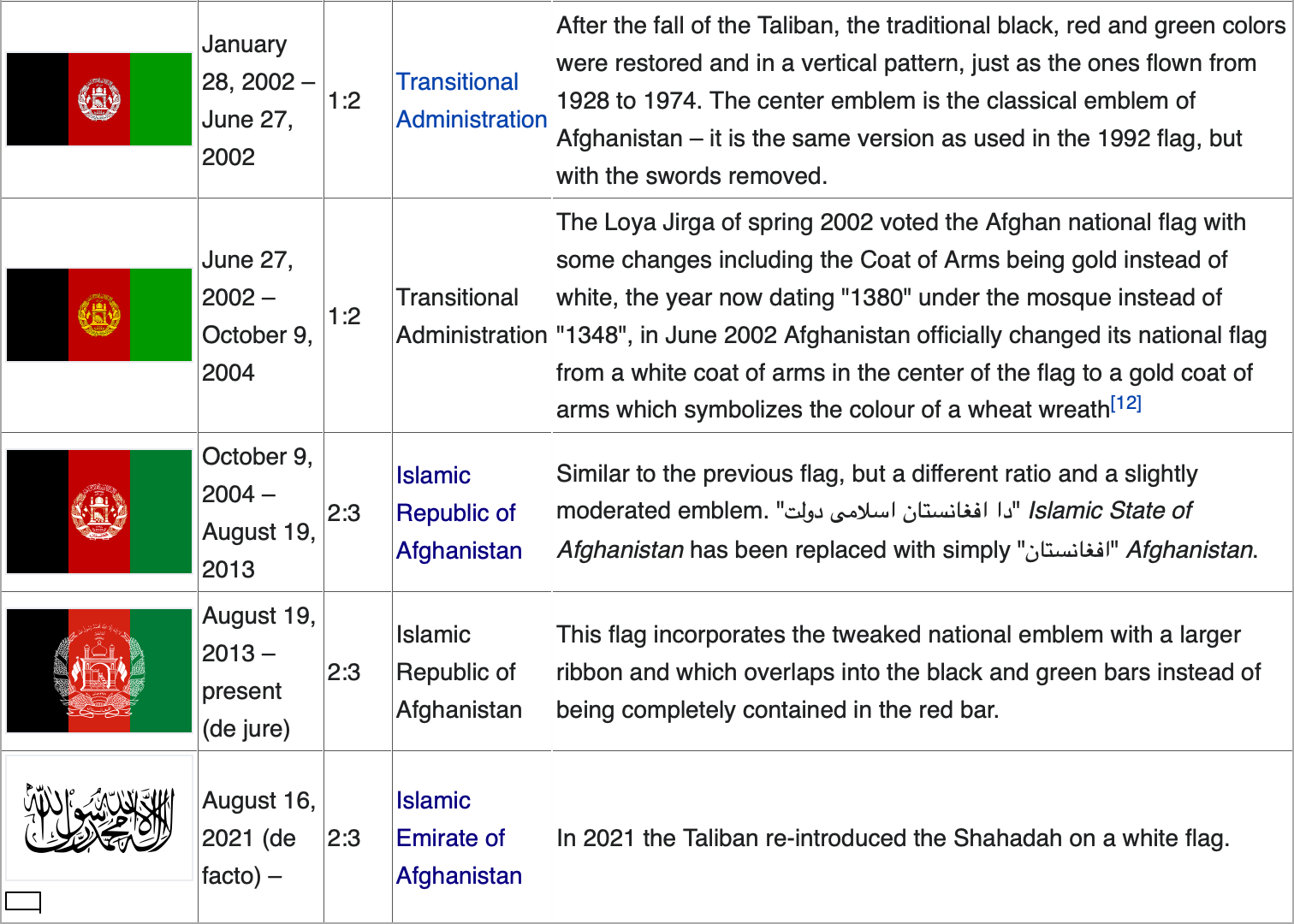
🔄 Flag Change Precedent
There is precedent for flags changing on the emoji keyboard. In 2017, Mauritania made a relatively minor change to its flag, adding a red stripe to the top and bottom.
Apple updated iOS to reflect this change in 2018 (old / new) and Samsung updated its emoji font in 2019 (old / new). As of 2021, all major platforms now show the new design when viewing 🇲🇷 Flag: Mauritania.
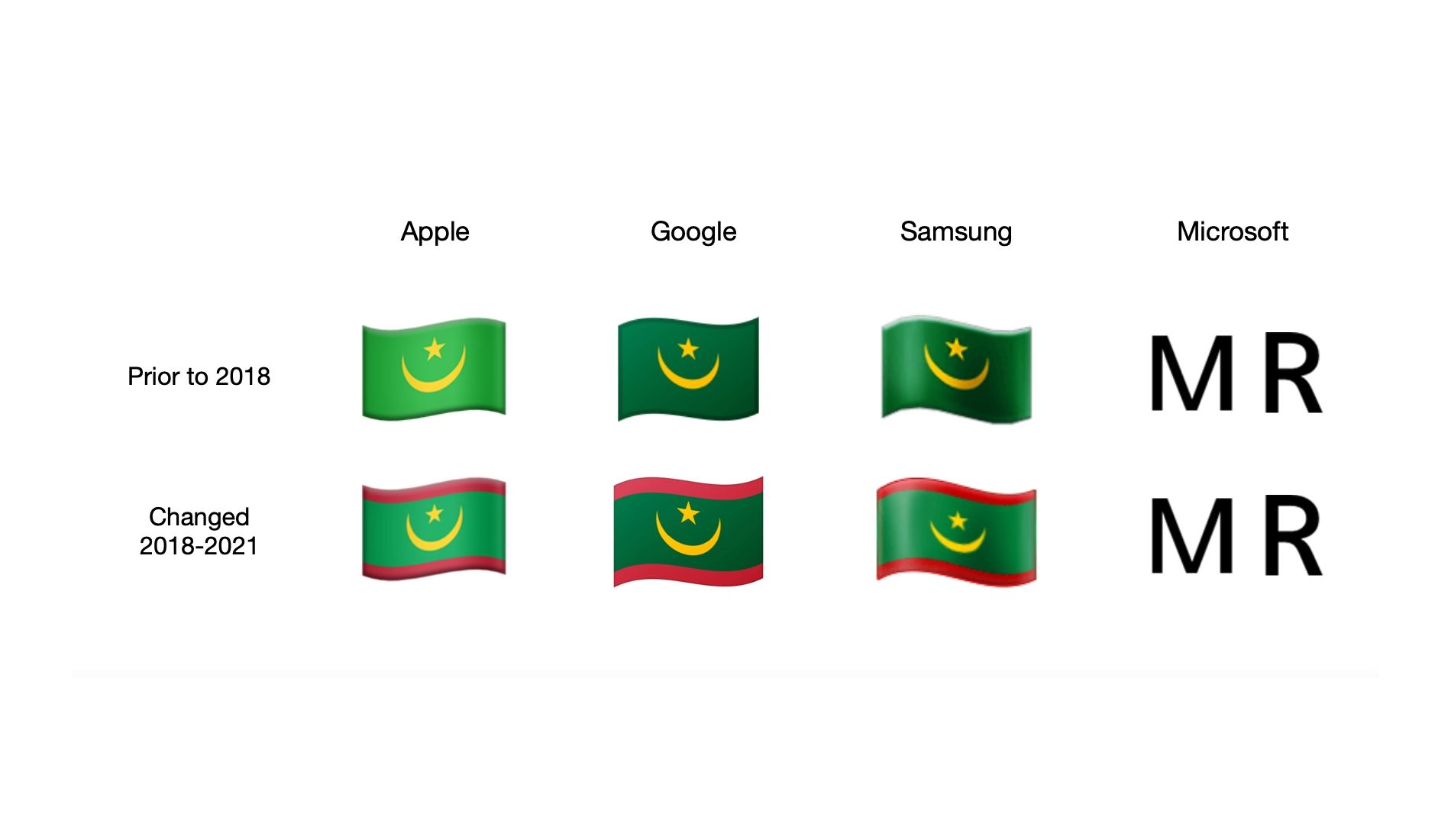
Similarly, the 🇷🇪 Flag: Réunion emoji has seen a new consensus over time. This one made slightly more difficult by the lack of an officially agreed flag except the Flag of France. Many platforms changed from one unofficial flag of Réunion to a different unofficial flag throughout 2016-2019.
Google never supported the older design shown by Samsung and Apple.
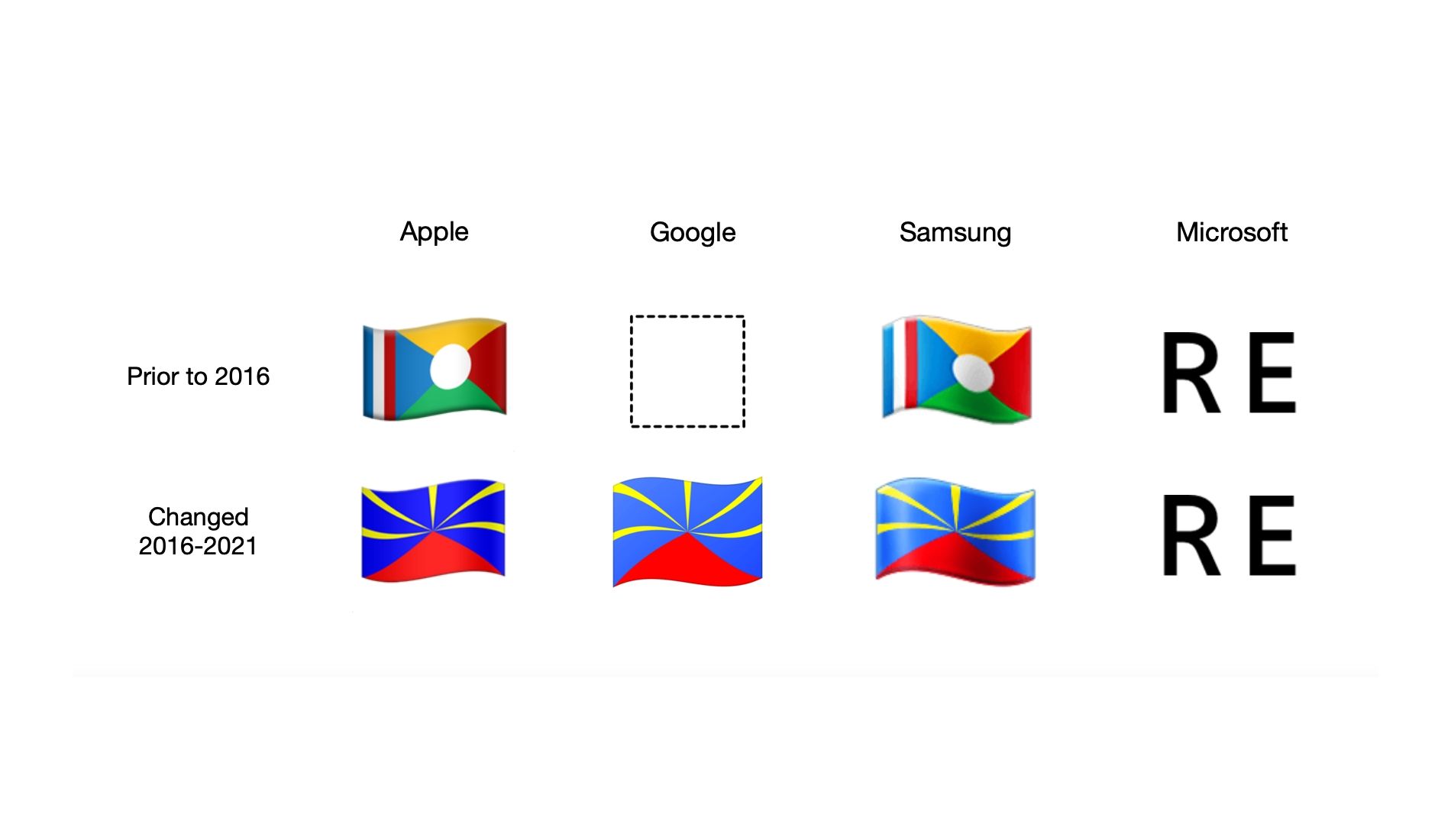
For both examples, Microsoft's decision to only show two letter country codes instead of flags means there has been no change on Windows.
While Microsoft has never commented on the reason it doesn't support emoji flags, past history when it comes to similar geopolitical decisions strongly hints at this being a considered choice.
🌫 Ephemeral Emojis
Every emoji is ephemeral in some ways. Yes the code point lives on (or in the case of most flags, the sequence of code points), but designs can and will change over time.
This is less problematic when the burger emoji changes the order of its ingredients, but more concerning to some when there is regime change in a country.
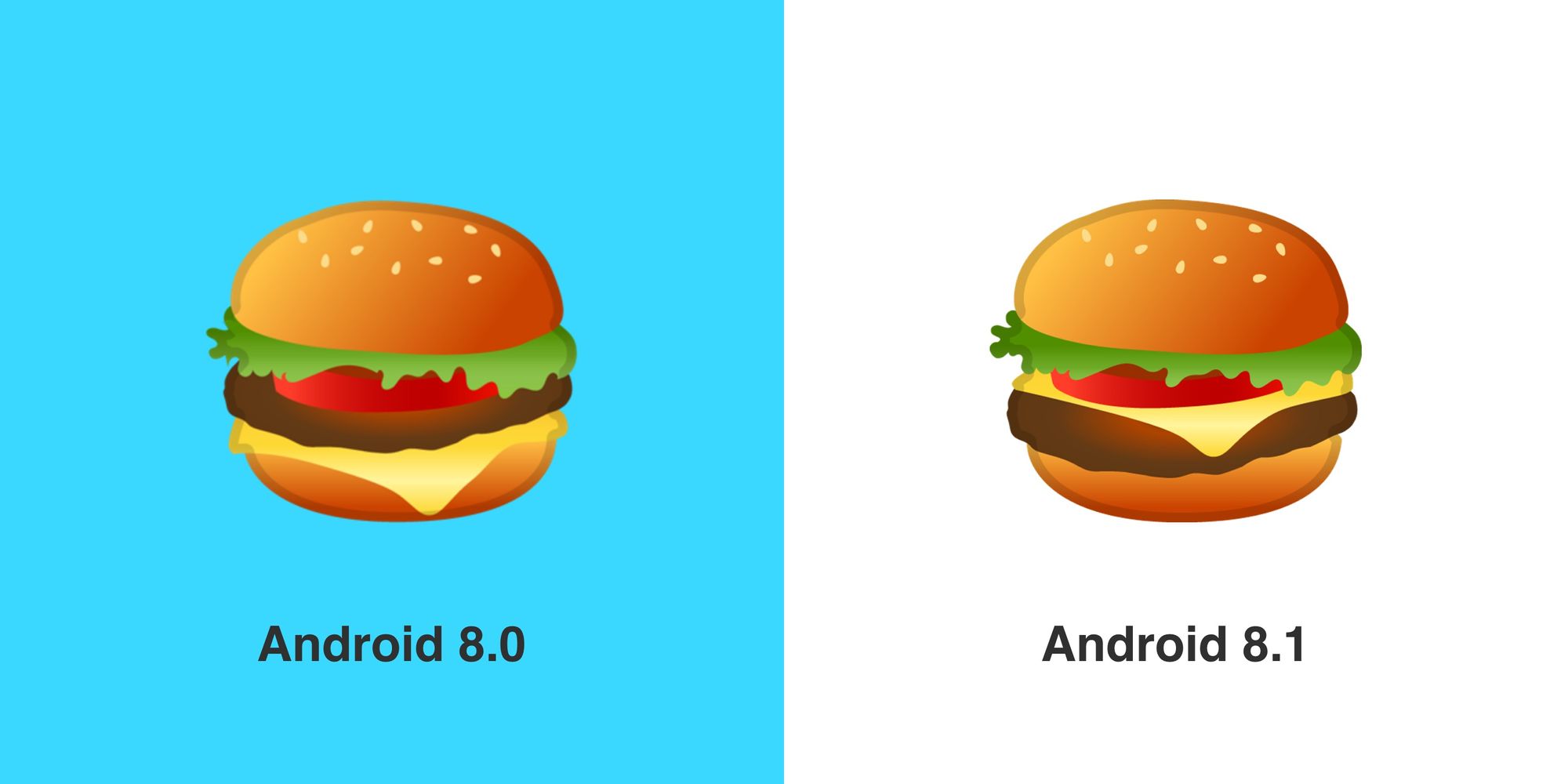
Everything we say or do both online and in the physical world is context-dependant. The same applies to any emoji.
If the Afghanistan Flag emoji does change to represent a Taliban-controlled nation, the meaning of prior text that includes this emoji 🇦🇫 will change. One would need to note the date and time that was written, to ascertain the intention of the author.
Understanding of the way emojis can and do change over time is now commonplace in court cases. When screenshots or text are used in evidence, the date, time and platform of a message sender and recipient is needed to determine who saw which version of any emoji. With those details, an emoji design can be verified using Emojipedia's emoji archive dating back twenty years.
🚫 No Historic Flags
Unicode does not support what it deems historical flags, which rules having different flag choices for each country based on earlier designs. The documentation for emoji proposals states:
Other regional and geopolitical flags have no mechanism within the Unicode Standard. That is, no mechanism currently exists for regions of the world or geopolitical bodies that do not have a valid Unicode region code (based on ISO/BCP47) or Unicode subdivision code (based on ISO 3166-2).
This includes historical flags (for example: South Vietnam) as well as current flags which do not have a corresponding region code or subdivision code (for example: Assyrian, Australian Aboriginal, Kurdistan, Maori, Torres Strait Islander, NATO).
This rules out the option of having both the old and new flag. Unless a new country were formed along the way.
Given the potential for flags to change, a statement like this may forever have a different meaning if written in 2020 compared to 2022:
“🇦🇫❤️🇦🇫❤️🇦🇫”
🔣 Alternative flag options
What else could happen to this flag in future?
- The glyph for 🇦🇫 Flag: Afghanistan could be removed on some or all platforms, leaving the letters A and F for any previous use.
- The current flag is left as-is, regardless of regime change or recognition of any new flag in future.
- The country of Afghanistan splits or divides along new lines. A new country two-letter country code is issued and used for the new country.
- More vendors could follow the lead of Microsoft, which has chosen not to render any country flag emoji in Windows.
- A period of time is allowed to pass where no changes are made. Consideration is given to any potential changes in the coming years.
This is a sensitive topic for all involved, and should be treated with due care and caution.
The future of the flag of Afghanistan largely depends on whether the Taliban is seen as legitimate on the global stage in the months and years to come. Only then, will it be clearer which options are on the table for the emoji flag.
